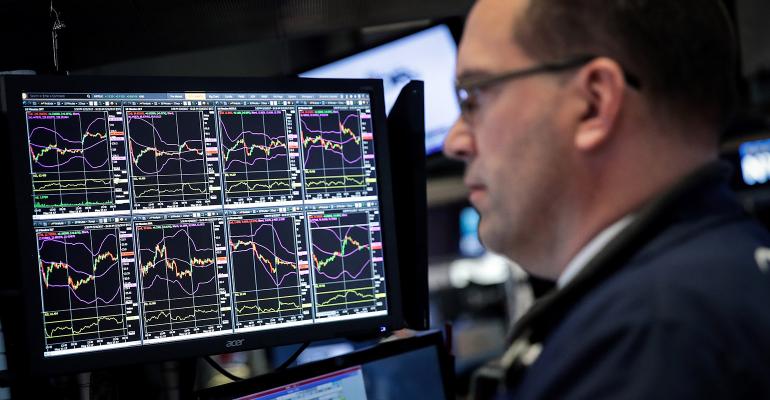By Elena Popina
(Bloomberg) --It’s pretty simple: in three decades since the Cboe Volatility Index was invented, 2017 will go down as the least exciting year for stocks on record. There are three trading days left and the VIX’s average level has been 11.11, about 10 percent lower than the next-closest year.
It’s tempting to say nobody thinks it will last, but that would be to ignore the walls of money that remain stacked up in bets that it will. Going just by the sliver represented by listed securities, about $2.4 billion is in the short volatility trade as of this month, the most on record. Hundreds of billions more are betting against beta in things like volatility futures.
Still, that doesn’t mean investors are ignoring the possibility of a resurgence, or at least a reversion to the mean. Here’s a look at volatility positioning as it stands now.
Surging Cost of Protection Against VIX Upside
Nervousness about next year is visible in the relative cost of betting on an increase in volatility, which has surged to a peak compared with wagers on a decline. (The spread is based on three-month VIX skew in data compiled by Bloomberg.) Someone, somewhere is spending money to capitalize on a rebound in the gauge.

But it’s the furthest thing from a one-way bet. The global short volatility trade currently has more than $2 trillion in various strategies, according to an October report by Christopher Cole, the founder of Artemis Capital Advisers hedge fund. He compared the strategy of betting that volatility, already near record lows, will fall even further, to a snake “blind to the fact that it is devouring its own body.”
Reptilian autosarcophagy aside, as of December 2017, betting against volatility has been the trade that worked. An analysis on the ETF.com website Tuesday said that seven of the 20 worst-performing exchange-traded securities this year were long VIX and other volatility measures.
Investors see a 74 percent probability that equity price swings will widen next year as the current levels of volatility are “unsustainable,” according to a survey of 229 investors representing $6 trillion in managed assets conducted by Absolute Strategy Research. The VIX rose for a second day to 10.25 on Tuesday after hanging below 10 for about 20 percent of the time this year.
Record Number of Investors See Stocks as Overvalued
Between rising corporate profits, a pick-up in global growth and laudable message-management by central banks, volatility has had few catalysts. But as the S&P 500 Index has reached 62 all-time highs this year, a record number of investors see stocks as overvalued, according to a Bank of America Merrill Lynch survey last month.
Perhaps as a result, smart-beta exchange-traded funds purporting to offer a haven from chaos have taken in more than $3.5 billion in 2017.

Anyone in a short-volatility position should be aware that when the end comes, it usually comes fast.
“Look at what happened in January 2016, a drop of more than 5 percent in the S&P -- and a spike in volatility -- came out of the blue,” said Michael Antonelli, an institutional equity sales trader and managing director at Robert W. Baird & Co. “When vol goes up, it moves quickly, making it hard to exit when you’re short volatility in a significant amount.”
Earnings Dispersion and Volatility Pick-Up
For Mike Wilson, Morgan Stanley’s chief U.S. equity strategist, the death knell for dormant volatility next year will come from less benign global macro conditions. A more challenging global growth environment, the Federal Reserve tightening coupled with the tax uncertainty will lead to a wider dispersion in economic data and earnings data, resulting in more volatility.

Another hint that the low VIX doesn’t bespeak a dumbfounded unanimity is the volatility curve.
In a blog post last month, New York Federal Reserve economists pointed out that investors are paying noticeably more to hedge against price swings a year from now than for shorter-term volatility. Their analysis found that the difference between one-month implied volatility and one-year was about three times as steep as it normally is.
To contact the reporter on this story: Elena Popina in New York at [email protected] To contact the editors responsible for this story: Arie Shapira at [email protected] Chris Nagi, Richard Richtmyer





